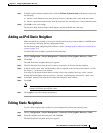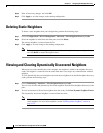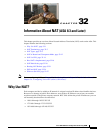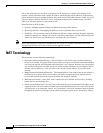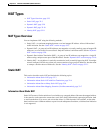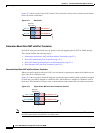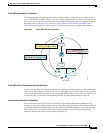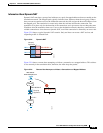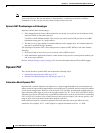
32-3
Cisco ASA 5500 Series Configuration Guide using ASDM
Chapter 32 Information About NAT (ASA 8.3 and Later)
NAT Types
NAT Types
• NAT Types Overview, page 32-3
• Static NAT, page 32-3
• Dynamic NAT, page 32-8
• Dynamic PAT, page 32-10
• Identity NAT, page 32-11
NAT Types Overview
You can implement NAT using the following methods:
• Static NAT—A consistent mapping between a real and mapped IP address. Allows bidirectional
traffic initiation. See the “Static NAT” section on page 32-3.
• Dynamic NAT—A group of real IP addresses are mapped to a (usually smaller) group of mapped IP
addresses, on a first come, first served basis. Only the real host can initiate traffic. See the “Dynamic
NAT” section on page 32-8.
• Dynamic Port Address Translation (PAT)—A group of real IP addresses are mapped to a single IP
address using a unique source port of that IP address. See the “Dynamic PAT” section on page 32-10.
• Identity NAT—A real address is statically transalted to itself, essentially bypassing NAT. You might
want to configure NAT this way when you want to translate a large group of addresses, but then want
to exempt a smaller subset of addresses. See the “Identity NAT” section on page 32-11.
Static NAT
This section describes static NAT and includes the following topics:
• Information About Static NAT, page 32-3
• Information About Static NAT with Port Translation, page 32-4
• Information About One-to-Many Static NAT, page 32-6
• Information About Other Mapping Scenarios (Not Recommended), page 32-7
Information About Static NAT
Static NAT creates a fixed translation of a real address to a mapped address. Because the mapped address
is the same for each consecutive connection, static NAT allows bidirectional connection initiation, both
to and from the host (if an access rule exists that allows it). With dynamic NAT and PAT, on the other
hand, each host uses a different address or port for each subsequent translation, so bidirectional initiation
is not supported.



